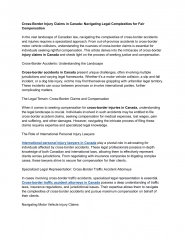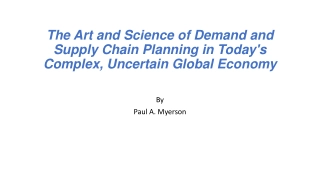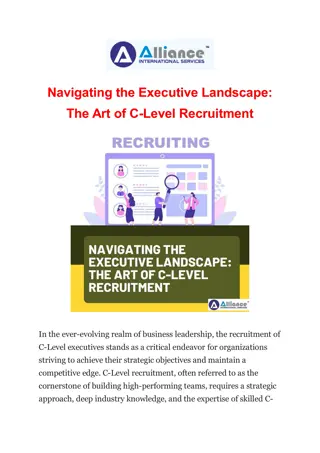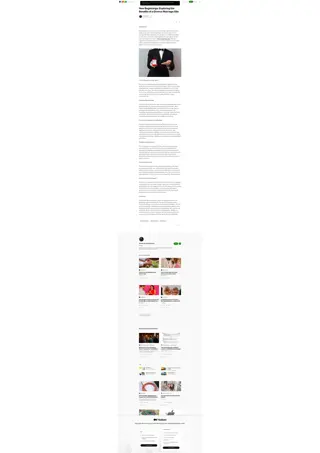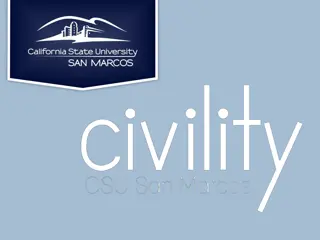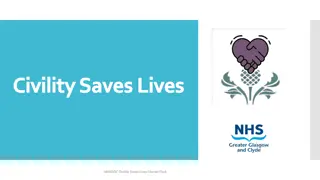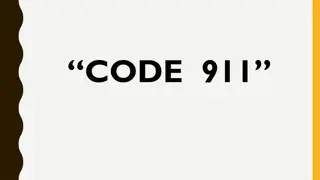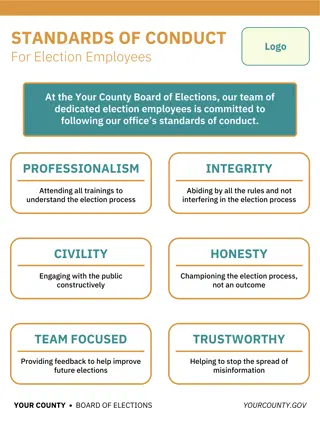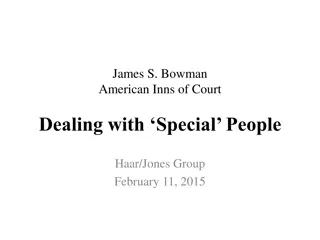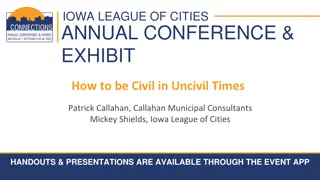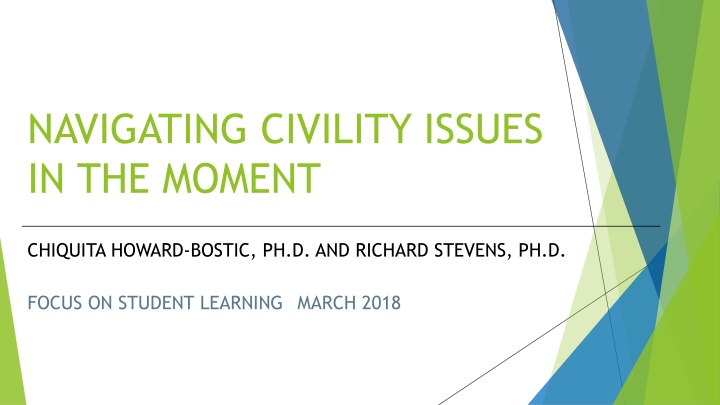
Navigating Civility Issues in Student Learning Environments
Explore strategies to address civility issues in the classroom, understand the value of setting expectations, and foster a sense of belonging for all students. Learn how to navigate microaggressions and bias, and apply the STAR approach to promote healthy learning environments.
Download Presentation

Please find below an Image/Link to download the presentation.
The content on the website is provided AS IS for your information and personal use only. It may not be sold, licensed, or shared on other websites without obtaining consent from the author. If you encounter any issues during the download, it is possible that the publisher has removed the file from their server.
You are allowed to download the files provided on this website for personal or commercial use, subject to the condition that they are used lawfully. All files are the property of their respective owners.
The content on the website is provided AS IS for your information and personal use only. It may not be sold, licensed, or shared on other websites without obtaining consent from the author.
E N D
Presentation Transcript
NAVIGATING CIVILITY ISSUES IN THE MOMENT CHIQUITA HOWARD-BOSTIC, PH.D. AND RICHARD STEVENS, PH.D. FOCUS ON STUDENT LEARNING MARCH 2018
GOALS Understand the value of setting expectations about civility in the classroom. Effectively address student behaviors that compromise healthy learning environments. Provide a transformative learning experience for all involved by building trust and respect.
ENVIRONMENT: SETTING EXPECTATIONS KURT LEWIN CHANGE MODEL B = f(P x E) Behavior is the function of the interaction of the person and the environment. (Lewin, 1936)
SENSE OF BELONGING Basic human need Fundamental motive, sufficient to drive human behavior Heightened importance (a) in certain contexts, (b) at certain times, and (c) among certain populations Related to and a consequence of mattering Affected by and intersect social identities Engenders other positive outcomes Must be satisfied on a continual basis and like changes as circumstances, conditions, and contexts change
STAR APPROACH S ITUATION: LISTEN to the scenario. T ASK: DESCRIBE a time when someone believed they were treated unfairly or unequally. A CTION: LEARN techniques used to combat the situation. R ESULT: EXPLAIN how to help in the situation.
MICROAGGRESSIONS/BIAS: REPERCUSSIONS Not belonging/Abnormal Hiding/Invisibility Untrustworthy Internalized discrimination Having to act preemptively Identity development or disruption Pressure representing race Psychological distress/mental disorders Inferiority/Self-esteem issues Intimidated/threatened
STAR APPROACH SITUATION & TASK INSTRUCTOR to define the original misunderstood concept STUDENT 1 to become offended and respond to the instructor for sharing the definition in class STUDENT 2 to disagree with the definition of the concept, defining it as inaccurate STUDENT 3 to speak out of frustration about the student and instructor, since they did not want to pay to hear this
STAR APPROACH: ACTION AND RESULT 1. ASSESS WHETHER YOU ARE PHYSICALLY SAFE 2. ADDRESS THE BEHAVIORS 3. FOCUS YOUR ATTENTION ON THE CHALLENGES 4. IDENTIFY THE PROBLEMS AND CONSEQUENCES 5. REFUSE TO JOIN NEGATIVE BEHAVIOR
SAFE APPROACH: COMMUNICATION S INCERE A UTHENTIC F AIR E THICAL Feelings typically determine how we communicate our ideas. However, communication is about content, perspective, and delivery. The SAFE approach provides four techniques to offer unique perspectives that help deliver ideas more effectively.
SAFE APPROACH: SINCERE AND AUTHENTIC SINCERE: Make eye contact, gesture toward the speaker, listen actively, react genuinely using your mouth and body to respond, ask open ended questions to elaborate. A UTHENTIC: Be honest, understand what is important to you, build trust, use the facts, deal with issues immediately, be direct, speak from your own perspective without judgement, pay attention to what is happening now.
SAFE APPROACH: FAIR AND ETHICAL F AIR: Consider why another person thinks/feels, understand life experiences that shape another person's point of view,see the world through someone else s eyes, do not criticize someone else s tastes, understand what might be appealing. E THICAL: Empower others to make responsible choices, be honest, bring about good in all actions, prevent or minimize harm, do not waste resources, provide what they you owe or what someone deserves, do not place unfair burdens on others.
OTHER FORMS OF INCIVILITY SYMBOLS: Displaying swastikas, confederate flag, or calendars that objectify women/men DOWNPLAYING: Employee asks a colleague of color how she got her job, implying through affirmative action/quotas TARGETING:You don t sound Mexican; would not have ever guessed you were gay. ENVIRONMENTAL SLIGHT: Asking an Asian American where they were born, conveying that all people of Asian descent are international. INSULTS: Jokes at the expense of someone s identity
THANK YOU FOR YOUR TIME QUESTIONS AND COMMENTS



